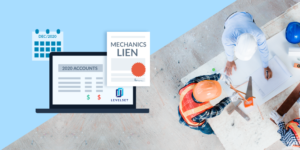
As the year comes to a close and you review your financials, you may realize that you have more outstanding invoices than you’d like. There are a number of reasons why you don’t want to go into the new year with these outstanding accounts: You have 1099 taxes to pay, you want to have extra money for you and your employees for the holidays, and — bottom line — you deserve to get paid for the work you’ve done this year. Let’s keep 2021 in the past (for a lot of reasons) and start fresh in 2022.
So what can you do about outstanding receivables? If you’re absolutely sure that you won’t be paid on certain invoices, prepare to report the lost revenue as bad debt in your financials.
However, if you’re unpaid on jobs that you aren’t ready to completely write off, consider filing a mechanics lien.
Mechanics liens are powerful. When a customer isn’t paying you, filing a mechanics lien alerts the property owner to your non-payment situation. A lien can be difficult and costly for property owners to remove without paying you, so the general contractor or owner is eager to make sure you get paid so you can release the lien.
Even if your lien doesn’t get you paid before January 1, at least you made the effort to collect payment. And, who knows — you might get a surprise check in the mail in the new year.
Pro tip: While you are reviewing accounts receivable and determining which jobs you should lien, you can make note of which customers have caused payment problems. If you work with these customers again in the new year, make sure to protect your payment rights with preliminary notices to eliminate the risk of nonpayment.
If you’ve never filed a lien before or you’re pressed for time during the busy holiday season, you can use Levelset to file a lien quickly and easily.